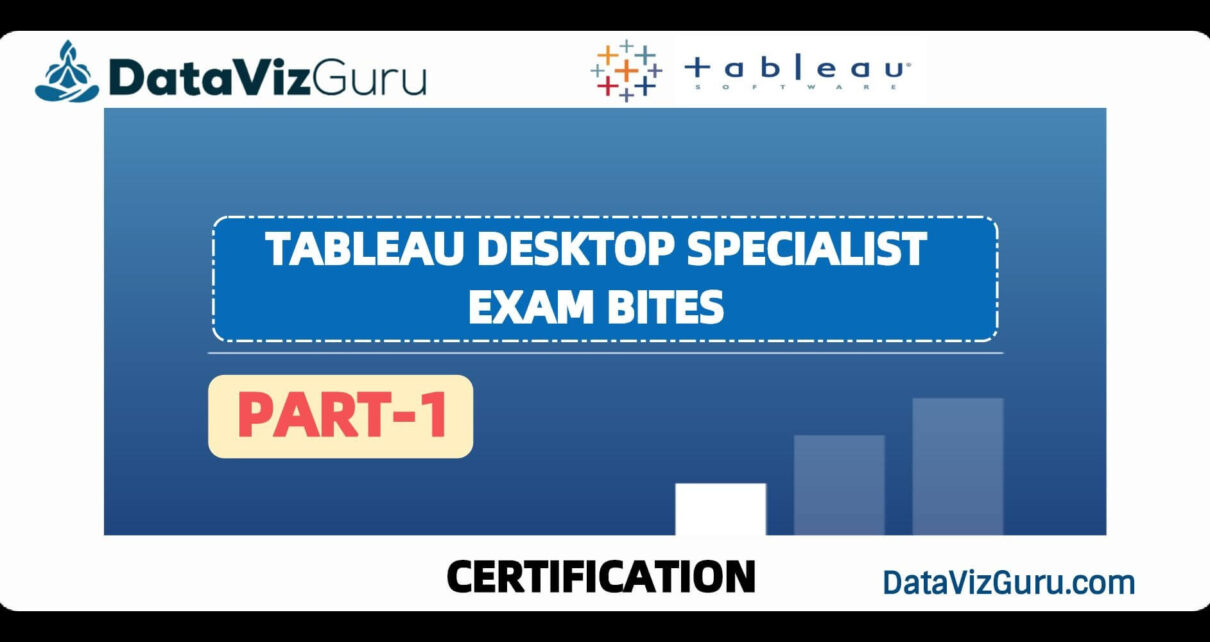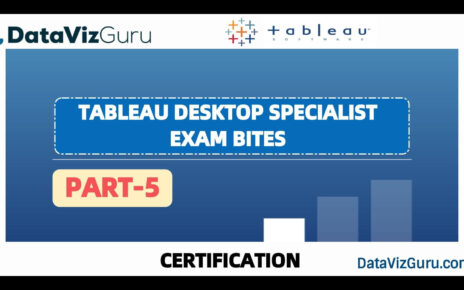Skills Measured in Tableau for Certification
Many skills are measured before one can obtain a Tableau Certificate. However, connecting to data and preparing data is the most basic requirement. To split it into categories we can say that it comprises of the below three:
- Create and Save data connections
- Modify data connections
- Manage data properties
Let’s talk about the first skill set:
Create and Save data connections
If you wish to pull in data from an external source for swift analysis, you need not create an entire data source and then connect it in Tableau, but you can copy and paste the data straight away to your workbook. Tableau will automatically create a data source so that you can begin your analysis. Once the data gets pasted, it creates a new connection in the existing one. Once you paste the data as a data source, the data source is saved as a text file to your Tableau Repository after you save the workbook. Tableau enables you to copy and paste data from a variety of applications, namely Microsoft Excel, Microsoft Word, and HTML tables from web pages.
In Tableau, there are two types of connections, Tableau Data Extracts, and tableau Live. Tableau Data Extracts are a subset of data optimized for aggregation and loaded into system memory for quick visualization. Extracts are much faster than live connections, especially in more complex displays with large data sets, filters, calculations, etc. However, Live links offer the convenience of real-time updates, with any changes in the data source reflected in Tableau. Unlike extracts, databases are not optimized for performing quickly. With live connections, your data queries are only as fast as the database itself.
There are two types of the workbook that you can create using Tableau, Tableau workbook, and Tableau Packaged workbook. A tableau workbook file type is probably the most common that you will see and create when working with Tableau. It also consists of data source connection information and any metadata you have created for that connection. While a Tableau Workbook (.twb), as described above, holds all the information Tableau requires to draw, it does not include the data itself. A Packaged Workbook (.txbx), however, combines the information in a workbook and bundles it with any local data – i.e., data that is not on a server.
All you need to do is to go to the data source page and select ‘Paste data as connection’ or ‘Paste data as the data source.’ Later select ‘File’ and then ‘Save’ to save the data source.
Now let us understand Tableau Datasource and Tableau Packaged Datasource. In Tableau Datasource (.tds), you are giving Tableau information about the data you will be using – you are setting up its ‘metadata.’ You could also send this file so that your clients or customers have access to the nice formatting and custom fields you have worked to set up.
However, in Tableau Packaged Datasource (.tdsx), it is as same as a tableau workbook like .twb does not include any of the data but a .twbx does, in the same way, a .tds file only contains the information about the data, not the data itself. A Tableau Packaged Datasource (.tdsx), however, includes all the default properties along with the data.
If you want to know more about the next skill set, kindly go through the next blog to modifying data connections
Also, Try answering these Tableau multiple-choice questions quiz and exams to test your skills in the Tableau.
- Tableau Desktop Specialist Practice Questions for Global Certification (Practice quiz)
- Tableau Desktop Specialist (Practice Exams)
If you have any questions, please shoot an email to info@datavizguru.com






One Reply to “TABLEAU DESKTOP SPECIALIST EXAM BITES : PART – 1”